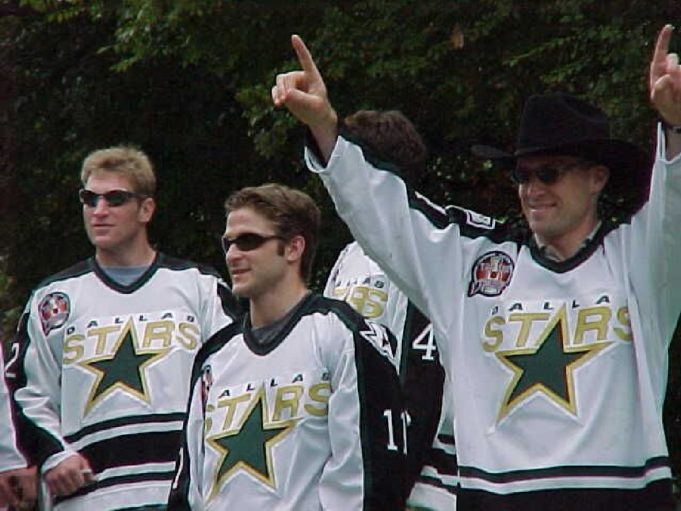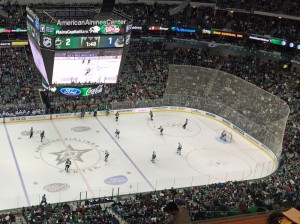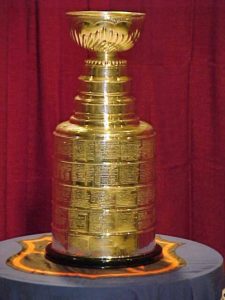Dallas Stars fans have had a lot of reasons to take pride in their team this season. They’ve played exciting hockey, hovering at or near the league lead in goals scored all year. Supporters have no doubt loved the team’s moxie, demonstrated most recently by taking six points from four road games (including three in the Pacific time zone) in six days. And they’ve certainly enjoyed seeing the Stars compile the National Hockey League’s best record while featuring a number of guys who’ve never played for another NHL team.
The Stars drafted their leading goal scorer in the fifth round in 2007. They took their top-scoring defenseman in the same round three years later. Jamie Benn and John Klingberg join nine other men on the current roster whom the Stars either drafted or signed after the player went undrafted.
That Dallas would see success from homegrown players comes as no surprise to Stars fans who have expected a wave of young players to move the franchise forward for a few years now. The team’s top minor league affiliate, the AHL’s Texas Stars, have been to the Calder Cup finals twice this decade, winning the title in 2014. The ECHL’s Idaho Steelheads have not missed the playoffs as a Stars affiliate and won their league’s Kelly Cup in 2007.
This Stars team may end up being really good. Really, really good, even. The Stars have had a number of strong teams since coming to Dallas, but one can make the case that this is the most homegrown good team they’ve iced.
By way of comparison, I looked at the six Stars teams that have made the conference finals since homegrown Hall-of-Famer Mike Modano joined the team in 1989. The era had the draft remaining as an established commodity, Eastern European players becoming easier to import, and free agency in place. The rules for building a team changed over that period, but not so appreciably as to make comparisons irrelevant, as they would have been during the Original Six or WHA periods.
To calculate, I looked at the top 22 skaters as measured by playoff games played, plus the top three goalies in the organization. I figured that playoff participation let you truly know who the core players were, and that criterion also takes into account the trade deadline deals that impact a team’s finish. I made exceptions to add crucial performers who missed significant parts of the playoff runs, including the likes of 1998 Joe Nieuwendyk, 2000 Brian Skrudland, and 2008 Philippe Boucher. For this year’s team, I looked at the current roster plus the top three goaltenders.
We can start with the late 90s Stars teams. From 1998-2000, Dallas went to three straight conference finals, skated the Stanley Cup in 1999, and lost in the finals in 2000. General Manager Bob Gainey built those groups with savvy trades, money from Tom Hicks, and between seven and nine homegrown players a year. The free agents in that pre-salary-cap time included Brett Hull, Ed Belfour, and Pat Verbeek, and we should probably also note that a large contract kept Nieuwendyk from testing free agency. In addition to those high-dollar signings, trades matched the talent of Sergei Zubov and Daryl Sydor with the grit of Cup-winners from Gainey’s old Montreal organization, like Skrudland, Craig Ludwig, Mike Keane, and Guy Carbonneau. Those players combined with organizational products in their primes, like Modano, Jere Lehtinen, and Derian Hatcher, to produce the greatest era in franchise history.
The first team to make it to the finals in the Modano era came when he was 20 and the franchise had not left Minnesota. GM Bobby Clarke gave first-year coach Gainey 10 homegrown players with which to work, 12 trade acquisitions, a pair of veteran free agents, plus Stew Gavin on a waiver draft claim (the waiver draft got eliminated in the 2005 labor agreement). Dallas fans might recognize Stars draftees on that team like Neal Broten, Modano, Mike Craig, and Shawn Chambers (a supplemental draft selection who left the organization but returned as a free agent to win the ’99 Cup). That group, which also included former first-rounder Brian Bellows, lost to Pittsburgh in the Stanley Cup Finals.
2007-08 provides this year’s version the best competition for the title of “Most Homegrown Good Stars Team.” They had 14 guys who had never played for another NHL franchise. The four free agents included defensive stalwarts Philippe Boucher and Stephane Robidas. The seven trade acquisitions were headlined by trade deadline pickup Brad Richards and the stalwart Zubov. They posted 97 points and lost the conference finals in six games to Detroit.
There’s a case to be made that the ’07-’08 Stars were more indigenous than this ’15-16 batch, since they had the 14 draftees (all but three from the top two rounds). Heck, a third of their general managers that season were kind of homegrown (Brett Hull played here before sharing GM duties with Les Jackson after Hicks let Doug Armstrong go). But a development pipeline shows its depth not only by the players who come through it to play a key role for your team, but also by how effectively you can use it to acquire other talent. Here current GM Jim Nill and his predecessor, the former Star Nieuwendyk, have made a real impact on this year’s success.
The Stars traded a total of 13 players (plus three draft picks) to acquire top-six forwards Tyler Seguin, Patrick Sharp, Jason Spezza; solid defensemen Jason Demers and Alex Goligoski; and co-number one goalie Kari Lehtonen. Of the 13 traded players, all but one had never been the property of another NHL team. The lone exception, Seguin trade inclusion Joe Morrow, came to the Stars in a deal for former top pick Brenden Morrow.
Those other Stars teams had some success dealing players who came through the organization. Jackson (who had a hand in shaping all these teams in some front office position or another) and Hull’s package for Richards included draftees Jussi Jokinen and Mike Smith. Dave Gagner’s 40 goals and strong playoff run in 1991 made the deal for Jari Gronstrand and Paul Boutilier look pretty good. And even in hindsight, no Stars fan would undo Gainey’s swap of Jarome Iginla for Conn Smythe Trophy-winner Nieuwendyk. But the 2015-16 Stars have benefitted from using young talent to acquire top-caliber performers more frequently than any of their predecessors.
Speaking of youth, only one of the 11 homegrown Stars this season is older than 26 (Benn’s brother Jordie, 28) and there’s more talent waiting in Cedar Park. This team could be good for a while.
Nill no doubt understands how the draft-and-develop approach can win. The Red Wings team that beat the ’07-08 Stars group went on to win the most recent Motor City Stanley Cup. Eight of their top ten playoff scorers were guys the longtime Detroit Assistant GM helped draft. Stars fans hope a playoff leaders list that includes names like Benn, Klingberg, and Nichushkin brings the same hardware to North Texas.













